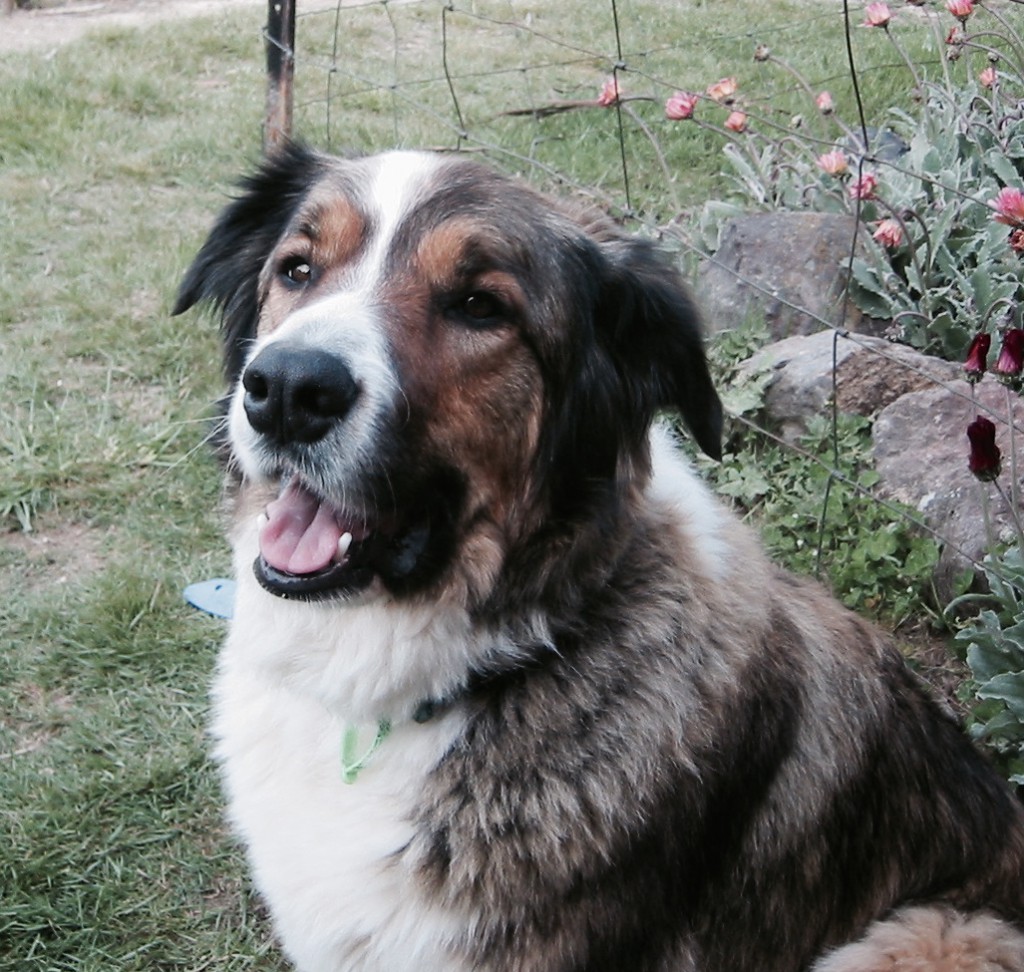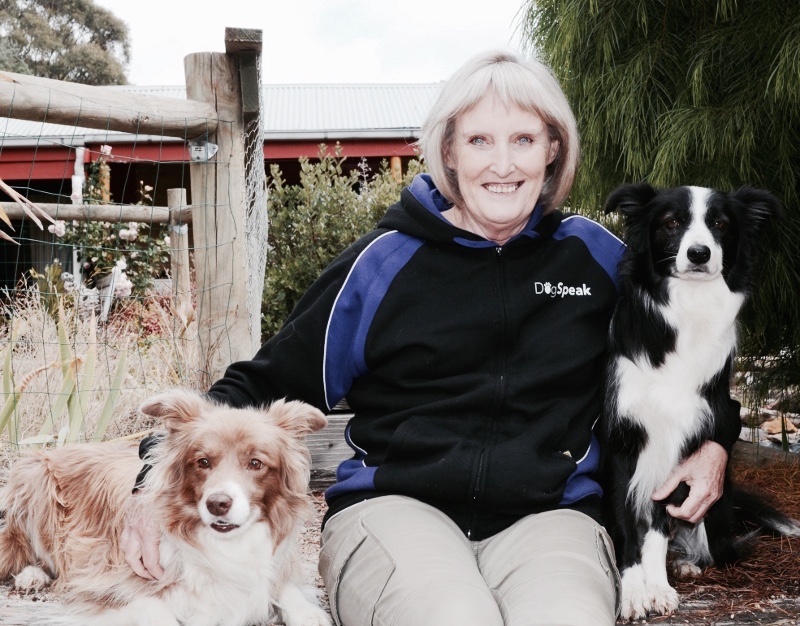I first met Tricia many years ago when I was starting my dog training apprenticeship. I was immediately impressed with her passion for training and her ever growing interest and pursuit to understand more about the science behind learning and the many benefits of Positive Reinforcement (R+) training. Since then Tricia has been a valuable source of knowledge and inspiration to me in these areas and in this guest blog we find out more about her journey and views on how R+ can enrich the lives of dogs and their owners.
1. What led you to embracing positive reinforcement training philosophy? Who has inspired you the most along the way?
Fifteen years ago I had a beautiful Border Collie, Byron. Byron was dog aggressive. At that time I knew very little, OK I knew nothing, about how to deal with this issue. I went to numerous trainers and various clubs where I was told I needed to be tougher with him, I needed to be a better leader, I needed to let him know who was boss, he needed a correction chain. All of this only made the situation worse and I decided I needed to educate myself if I was to help Byron. So began my journey of discovery into understanding what makes dogs tick.

Like most people of a certain age I trained using aversive methods, I never believed I was being harsh or cruel, it was just what I believed had to be done for a dog to learn. Over the years, the more I learned the more I realised most of the methods I was using were in fact unnecessary and harmful. I learned that I could use Positive Reinforcement and achieve better results, without having a power struggle, without being confrontational, without damaging the relationship I had with my dog. If I could achieve cooperation and mutual enjoyment with my dog then why would I use aversives, corrections or compulsion.
Over the years, the more I learned the more I realised most of the methods I was using were in fact unnecessary and harmful. I learned that I could use Positive Reinforcement and achieve better results, without having a power struggle, without being confrontational, without damaging the relationship I had with my dog.
There have been many people who have inspired me and reinforced the belief that Positive Reinforcement teaching not only works, but is ethically simply the right thing to do. Two people particularly:
Kathy Sdao, whose many videos changed my life in such an enjoyable way. I had the pleasure of attending one of Kathy’s seminars when she was in Australia. She shows how training an animal can be fun, enjoyable, rewarding and effective without the need to resort to outdated theories on hierarchy, rank, dominance and alpha leadership.
Terry Ryan, taught me how to train a chicken. Weird I know, but worth it. Terry travels the world teaching people how to train chickens. Why you ask…because if you can train a chicken, training a dog is a piece of cake. If your reinforcement is not high value enough, if your timing is out, if your criteria is not clear – your chicken is out of there. Learning how to teach a chicken is not really about teaching a behaviour to a chicken, it is about discovering how you need to totally understand Operant Conditioning to teach an animal and chickens are the perfect teachers. While dogs will accept bad training and may learn in spite of us, chickens will not – so chickens make us better dog trainers
if you can train a chicken, training a dog is a piece of cake!
2. What benefits have you seen people achieve from adopting positive training techniques for their dogs?
Most of the benefits I see when people start using positive training techniques is often within themselves. They begin to see their dog in a new light – as another sentient being that deserves respect, rather than an animal that must be controlled.
Obviously there is a huge benefit to the dog itself. They do not avoid their training sessions or trainer, they are not afraid to try things, they are not afraid of getting things wrong – they love learning. A recent puppy owner who had Rottweilers all his life, came into class. He proudly told me that he had Rotties all his life and he knew they needed ‘tough love’, so he had to use his correction chain. I told him they were not allowed in puppy class – but I would make a deal with him: Use a flat collar and just try the techniques I am advocating and if they don’t work, I’ll give you your money back. “What a great deal” he said smugly. Four weeks later at the end of the puppy course he was leaving and said “I would never have believed I could achieve that with my puppy. I teach her differently, I see her differently and our relationship is totally different to anything I had with my other dogs”. He was convinced and never wanted his money back!!
Four weeks later at the end of the puppy course he was leaving and said “I would never have believed I could achieve that with my puppy. I teach her differently, I see her differently and our relationship is totally different to anything I had with my other dogs”.
3. What are the main misconceptions about positive reinforcement training that you have encountered?

Misconceptions abound regarding using Positive Reinforcement to teach animals. They come from not only pet dog owners but also from other trainers using traditional methods. Some of the most common are:
You are bribing the dog with food: Not True. When you understand how to use food as a reinforcer correctly it is not bribing. This statement shows a lack of understanding of how powerful food is and how to use it effectively.
You cannot train if you don’t have food on you all the time: Not True. You can use whatever is reinforcing to the dog, it doesn’t have to be food. Most dogs love playing with toys. Although food is a primary reinforcer you can create lots of other effective reinforcers.
Positive reinforcement is permissive : Not True. Positive does not mean permissive. Just because positive trainers do not use positive punishment does not mean we allow the dogs to do whatever they like. We just focus on teaching behaviour we would like.
It is too slow, people want fast results: Not True. People are sometimes amazed how quickly the power of positive reinforcement, used effectively, can transform behaviour.
Positive trainers do not believe in discipline: Not True. We do believe in discipline just not the use of positive punishment. We choose other alternatives which may include, verbal interrupters, timeout, removing something the dog wants and extinction.
4. What are the top three behaviours you think every dog guardian should teach their dog to keep them safe and happy?
I focus not so much on behaviours but living skills. What is important to one family may not be important to another. After 15 years of professional dog training – actually what I really mean is 15 years of training people who have dogs – these are the three that would avoid most of the behaviours people have trouble with.
Socialisation: Everyone talks about socialisation, but it is often totally misunderstood. It is really about exposing your dog to everything in their environment that they will come into contact with. But here’s the thing – it needs to be a positive experience. Good early socialisation will prevent a lot of fear based behaviours such as reactivity, aggression, avoidance.
Impulse Control: A dog who learns to be calm and relax, is a dog who can be taken anywhere, anytime. Yes, a dog can learn this. It is all about learning impulse control – how to control one’s behaviour no matter what you feel like doing at the time. Teaching a dog to love a bed, mat or crate will be an enormous benefit when going out, travelling or visiting. A dog who is calm in most environments is a safe dog who is not easily scared or alternatively will not be running around scaring others.
Recall: Recall is an obedience term which simple means “Come here to me”. Teaching your to have a reliable recall is a safety issue. If your dog has a truly reliable recall, he has the freedom to exercise off lead, because he can be recalled under any circumstance back to you, regardless of the distraction.
5. What area of animal behaviour research is emerging that you are particularly enthusiastic about?
It is a very exciting time to be involved in the world of Dogs. There is so much research happening now in lots of different areas – how dogs think, dog cognition, the emotions of dogs, how dogs understand their world and how dogs can help humans. I don’t think we have yet come close to understanding how brilliant dogs are and what they are truly capable of.
I don’t think we have yet come close to understanding how brilliant dogs are and what they are truly capable of.
I am particularly excited by the research going on to understand more about dog cognition. Current research is happening at numerous places overseas and we have our own Australian researchers also doing great work. If pet people have a better understanding of their dog, how they think and learn and the emotions they feel – then they could not help but be better guardians.
ABOUT TRICIA
Tricia has been professionally educating owners and their dogs since 2005 – both classes and private consultations, in obedience, general manners, agility and consulting for more serious behaviour problems. She is a professional member of APDT (Association of Pet Dog Trainers) and PPG (The Pet Professional Guild).
Tricia has a Certificate 111 in Dog Training & Behaviour and completed a course in Applied Behaviour Analysis with Dr Susan Friedman. She is starting a Karen Pryor Academy Certification Course later this year. Her passion is educating people in the science of animal learning without the need for harsh, aversive methods. Find out more about Tricia and her training at www.dogspeak.com.au
